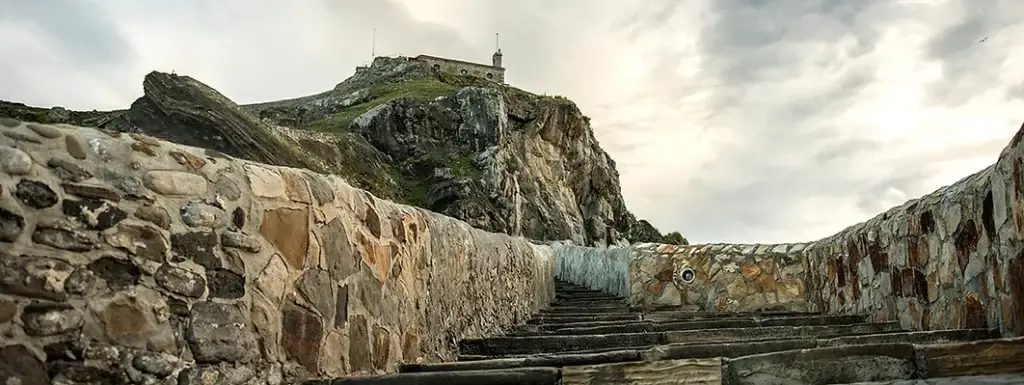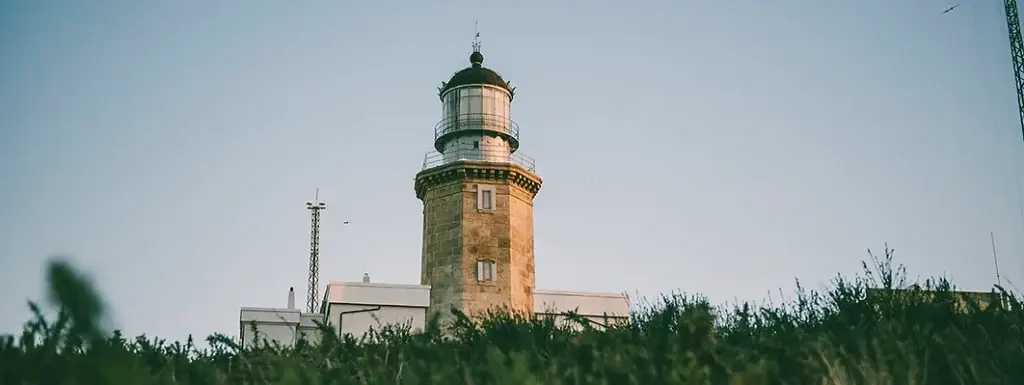Gaztelugatxe and Matxitxako
Gaztelugatxe, a magic place. An island that emerged from the constant battle between earth and sea. It’s natural beauty, with arches and caves chiseled throughout centuries, never disappoints it’s visitors.

Keep in mind when visiting this wonderful coastal place:
1.- It is located in a biotope, so it is our responsibility to take care of it and conserve it.
There are two options to visit Gaztelugatxe: during EASTER, JULY AND AUGUST, you have the possibility to go by bus and with a guide to get to know Gaztelugatxe better, this way you don’t need to book the ticket, when you book online all the services are included: buy your ticket here.
3.- The other option is to go on your own, to do this you need to book your free ticket on the following page: www.bizkaia.eus/eu/gaztelugatxe
Leave your car parked in Bermeo and use public transport.
The route requires a certain amount of physical effort, so it is advisable to be aware of your limitations. Don’t forget to bring suitable footwear and water to drink.
5.- Midday is the busiest time, especially in summer and on public holidays.
6.- Do you want to visit this place by sea? Boats leave from the port of Bermeo: Boat trips
7.- If you would like a souvenir of San Juan, you can order San Juan Oinatzak (The Footprints of San Juan) at the Gaztelugatxe bakery in Bermeo.
8.- The days on which masses are held: 24th June, 31st July, 29th August and 30th December.
9.- The image of the Virgin of Begoña de Lucarini lies under the underwater waters. If you are not a diver, there is a replica in the church of San Francisco de Bermeo.
In it’s depths, the sea keeps coral reefs full of color and the image of the Virgin of Begoña. It was a refuge during many battles, for example the resistance against the Crown of Castile. At the same time, since the middle ages it has been a reference for religious beliefs and customs.
On the Basque coast it is the most visited by pilgrims, the most important day being the 24th of June.
On the day of San Juan, most people come to celebrate the holiday, but a considerable amount come to fulfill promises or thank the Saint John.

The religious rituals of Gaztelugatxe are intrinsically united with the sea. Inside of the hermitage you can see hanging objects: miniature boats, paintings, photos… they are offerings that sailors and fishermen give the saint in appreciation for protecting their ship.
At the beginning of the “bonito del norte” fishing season, fishermen and “neskatillas” (women working at the ports) go to Gaztelugatxe to ask for good health, good weather and a good catch. This ritual also is done from the sea. The vessel is taken to the vicinity of gaztelugatxe to “do what has to be done”: round gaztelugatxe three times on the port side and three times on the starboard. There are also some who burn an herb called Saint John’s Wort in a pan and spread the ashes in the water. Even today, state of the art tuna ships that go through heavy revisions and have the best technology available, before weighing anchor for the Tropic come to San Juan to carry out this ancestral ritual.
It is exactly 241 steps to reach the top of Gaztelugatxe. According to the legend, the saint in just 3 steps reached the hermitage from Bermeo. Did you see his footprint in the rock? The first footprint is in Bermeo under the gate of San Juan of the ancient wall. They say whoever puts their foot in his print will not suffer from calluses throughout the rest of the year.
The Island of Akatz

The island of Akatz or Aketx is the sanctuary of a grand treasure that is the habitat of the storm bird (Hydrobates pelagicus). It isn’t easy to make out this small nocturnal bird unless there is a storm when it comes to the coast for protection. Another interesting point is that there are wild olive trees which remain from a time when the climate was much milder.
Matxitxako
You won't be able to find a place further north on the entire peninsula, the two lighthouses (old and new) and the power of nature make the area magical. If you want to feel the magnificence of the sky and the sea, stay to watch the sun set, you'll take photos naturally.

The violence of the sea of Bizkaia and the fury of the storms in this area have sunk many ships. The events that took place at noon on Holy Saturday 1878 can be considered very bad and tragic: the violent hurricane sank 14 boats and 3 boats and 85 sailors from Bermeo drowned. Another date to remember is the unfortunate night of August 12-13, 1912: as a result of the attack, 116 people from Bermeo died.
Thus, Bermeo has three lighthouses to help fishermen:
In the town itself, the Errosape lighthouse (1912) is located west of the Lamiaran point. The purpose of this signal is to facilitate the port of Bermeo. It looks like white and red light, in two groups of hiding every 6 seconds; it has a nine mile view.
The original of the two with the name of Macchitxa, was inaugurated on August 21, 1852.
The rigger of the works was Juan Martinez Aparizio, and at that time the tower, made of carved stone from the Durangalde quarries, cost 132,531 reais, and 233,796 reais for the optical apparatus. It is at the most protruding tip of the Machitxa cape. According to its optical and geometrical projection, the lighthouse was of the first class, the greatest reach at the time, 23 miles. It was a steady white light that flashed every 4 seconds. The height of the light source, above sea level, is 79.42 meters. It had three watchmen and was active until December 1909. Later, that old tower was used as a cloud tower.

The current lighthouse of Matxitxako is 110 meters from the south. It was inaugurated in 1909. It was the work of the famous engineer Rafael de La Cerda.
It served as a lighthouse school. The building, which is a watchman’s house, warehouse and tool storage, has a rectangular plan. The main entrance is a semi-circular arch. In the same way, the floors and openings are emphasized by means of moldings, which are finished with kalos. A white flash appears every 7 seconds, and the range is 35 miles. The focal plane is placed 122 meters above sea level, and 20.6 meters above the ground. The light illuminates the gap between Castro Urdiales and the Deba River.
As we are talking about Matxitxako, it is impossible not to mention the Naval Battle that took place on March 5, 1937. In fact, 35 sailors of the Basque Navy gave their lives in the battle against the Canarias cruiser of the rebels against the republic.

Routes
The unmatched landscape and its architectural treasures make tours of this area an unparalleled experience. To enjoy this, it is important to be in good physical shape.
Don’t forget to bring proper footwear and drinking water. Given that it is a protected area, taking care of the animals, plants and preserving the peace is the responsibility of everyone. Taking trash to it’s proper container is also the responsibility of everyone.
